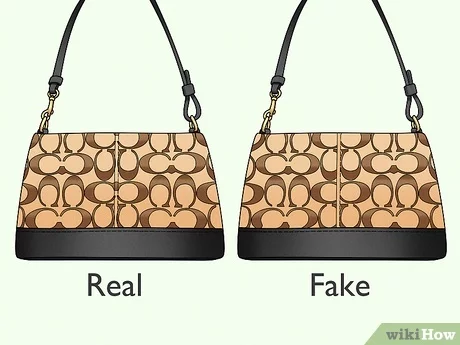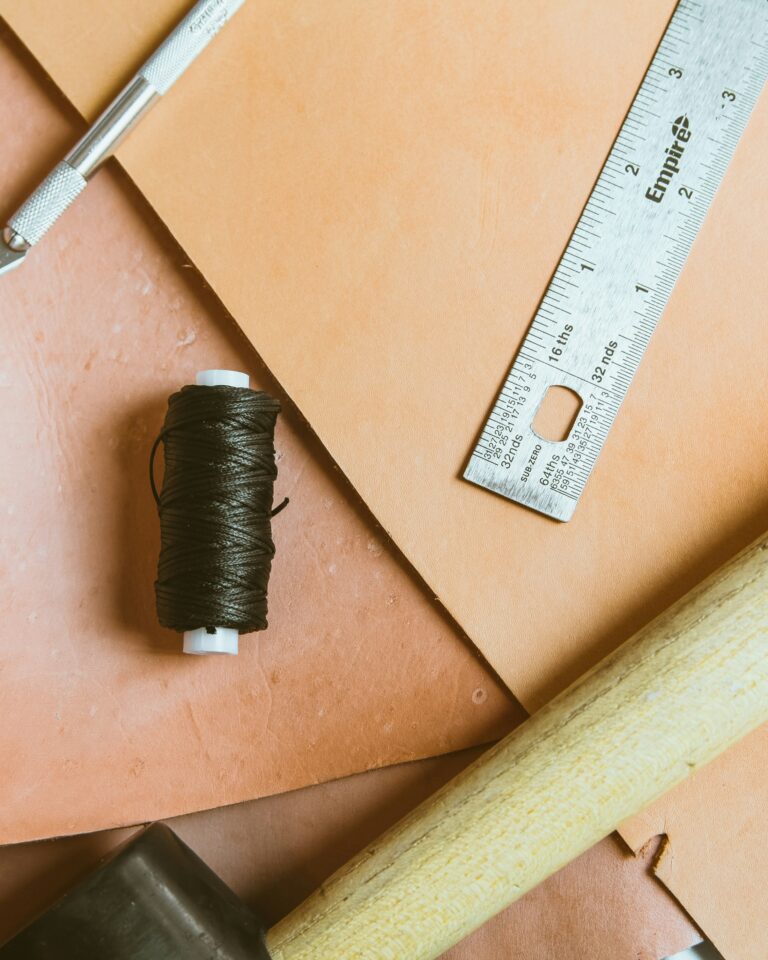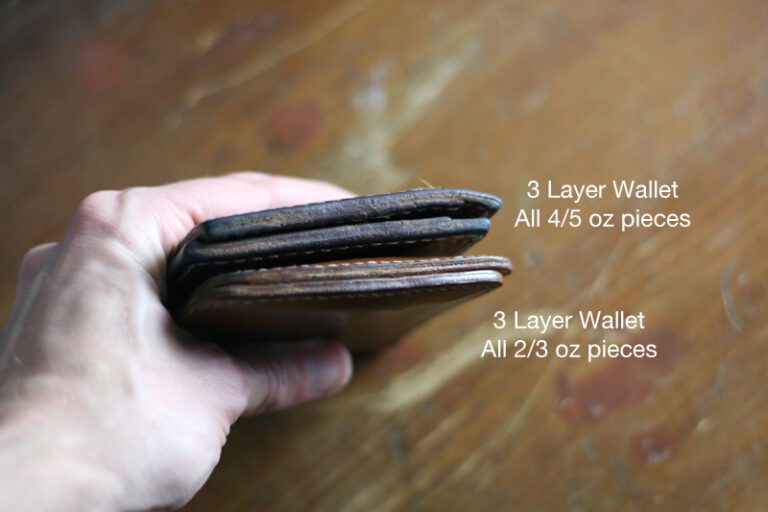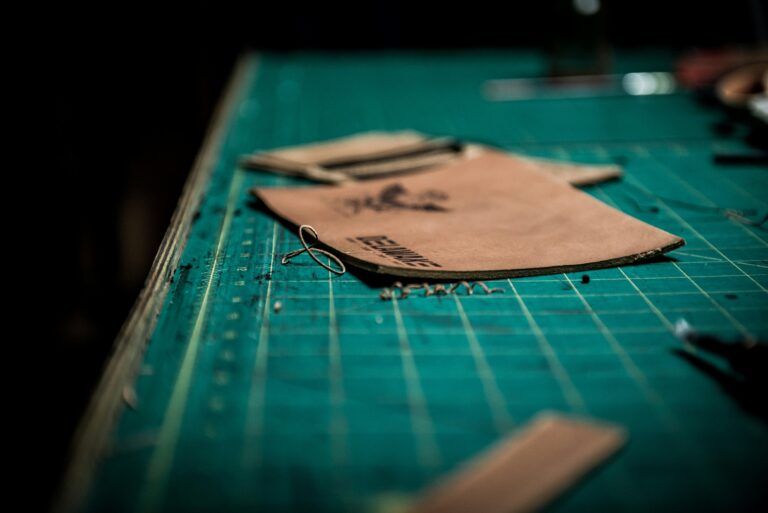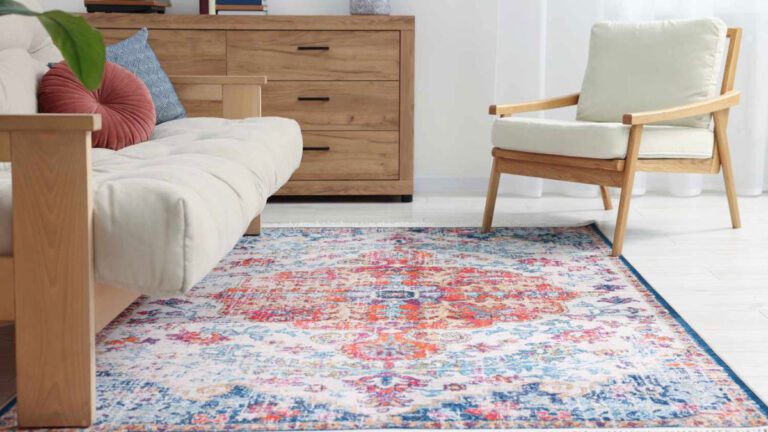Are Coach Bags Real Leather? Here’s What to Know
Deciphering Coach Bags
Coach bags are renowned for their high quality and craftsmanship, but knowing how to differentiate between authentic and counterfeit items is crucial for consumers.
Spotting Fake Coach Bags
Identifying a fake Coach bag involves paying close attention to a few key details. One should look for common indicators like low-quality or synthetic leather and poor or uneven stitching. Additionally, ensure that the Cs in the CC pattern are all horizontal, facing each other, and touching. Any variation in the pattern may indicate a fake bag.
Here are some pointers to help you spot a fake Coach bag:
- Material Quality: Authentic Coach bags use high-quality leather, which feels soft and smooth. Fake bags often use synthetic materials that feel rough and plastic-like.
- Stitching: Authentic bags feature precise, even stitching. In contrast, counterfeit bags tend to have uneven, loose, or frayed stitches.
- Pattern Alignment: In bags with the signature “CC” pattern, the Cs should be perfectly aligned and symmetrical. Misalignment or additional Cs can be a red flag.
- Hardware: The hardware on genuine bags is solid and engraved with the Coach logo. Fake bags may use lightweight, flimsy hardware without precise engravings.
- Serial Numbers: Authentic Coach bags have a “style number” with additional numbers rather than an actual serial number. This system was introduced after 1994 (Essex Fashion House).
For more tips on maintaining your leather bags, check out how to clean a Coach leather bag and how to store leather bags.
Authentic vs. Synthetic Leather
Understanding the difference between genuine leather and synthetic alternatives is essential for discerning bag owners. Genuine leather exudes quality and longevity, while synthetic options often fall short in similar characteristics.
Genuine Leather
- Texture: Real leather has an uneven texture, with natural grain patterns and imperfections. It feels soft and supple.
- Smell: Authentic leather has a distinctive, rich smell.
- Durability: Real leather ages gracefully, developing a unique patina over time.
- Maintenance: Requires regular care to prevent drying and cracking. Check out how to clean white leather bag and how do you clean a leather bag for tips.
Synthetic Leather
- Texture: Synthetic leather often has a uniform, plastic-like texture without natural grain patterns.
- Smell: Lacks the rich smell of genuine leather, often having a chemical or plastic odor.
- Durability: Less durable and more prone to cracking and peeling over time.
- Maintenance: Easier to maintain but doesn’t age well.
| Feature | Genuine Leather | Synthetic Leather |
|---|---|---|
| Texture | Soft, uneven, with natural grain | Uniform, plastic-like |
| Smell | Rich, distinctive | Chemical or plastic |
| Durability | Long-lasting, develops patina | Prone to cracking and peeling |
| Maintenance | Requires regular care | Easier to maintain |
Understanding these differences can help you confidently determine the quality of a Coach bag. Additionally, Coach’s modern sustainability efforts, such as the Coachtopia collection, use upcycled leather and waste materials, ensuring that even new products maintain a high standard of quality while promoting eco-friendly practices (Vogue Business).
For more information on leather care, explore how to restore leather bag and how to remove ink from leather bag.
Evolution of Coach Bags
Historical Leather Bag Details
Coach has a rich history of crafting leather bags, capturing the essence of American style since 1941. The brand began in a loft in Manhattan, producing handbags with a distinct saddle bag-inspired design, emphasizing durability and quality. Early Coach bags were celebrated for their high-quality craftsmanship and the use of premium leather, making them a timeless accessory for many women.
The hallmark of Coach’s early leather bags was their full-grain cowhide leather, known for its durability and ability to develop a rich patina over time. The leather used allowed the bags to withstand the test of time, maintaining their structure and appeal.
To understand just how valuable these early Coach bags are, consider these details:
| Feature | Description |
|---|---|
| Leather Type | Full-grain cowhide |
| Craftsmanship | Handcrafted with meticulous attention to detail |
| Durability | High; develops a natural patina with use |
| Design | Saddle bag-inspired with strong, simple lines |
For more insights on leather care, check out our guides on how to clean Coach leather bag and how to clean white leather bag.
Coach’s Modern Sustainability Efforts
In recent years, Coach has pivoted towards more sustainable practices, reflecting a shift in the fashion industry’s approach to environmental responsibility. A significant milestone in this endeavor is the launch of the Coachtopia collection.
The Coachtopia collection represents Coach’s commitment to sustainability, using materials that would otherwise end up in landfills. This line is designed with circularity in mind, featuring removable screw-back hardware, detachable handles and straps, and seam-out constructions to facilitate repair and extend the product’s lifespan (Vogue Business).
Key aspects of the Coachtopia collection:
| Feature | Description |
|---|---|
| Materials | Made from material waste, including leather fragments and zipper tracks |
| Design Philosophy | Focus on circularity to reduce environmental impact |
| Launch Regions | Debuted in the US, Canada, and UK, with plans for expansion |
| Unique Elements | Includes removable and replaceable components for longer lifespan |
Coach’s efforts don’t just stop at using recycled materials. The brand is also focused on reducing waste throughout the manufacturing process and encouraging customers to adopt more sustainable practices. To explore more options for maintaining your leather goods, visit our articles on how to store leather bags and how to get rid of stain on leather bag.
Through these efforts, Coach is not only preserving the tradition of high-quality leather craftsmanship but also ensuring that their products align with contemporary values of sustainability and environmental stewardship.
Understanding Coach Serial Numbers
Coach bags are known for their quality and authenticity, and one way to ensure you’re getting a genuine product is by understanding Coach serial numbers. These numbers offer information about the bag’s production year, location, and model.
Coach Serial Number Evolution
Coach bags do not have an actual “serial number” after 1994. Instead, they feature style numbers combined with additional identifiers, which are more informative than a serial number, offering unique details for specific bags (Essex Fashion House).
The style number formats have evolved over the years:
-
1994 to 2006: Format typically included a letter, followed by a number (1 or 2 digits depending on the year), another letter, a dash, and a 4-digit number.
Example Format Explanation A4X-1234 Letter/Year/Letter-Style Number -
2006 to 2020: Format changed to a letter followed by four numbers, a dash, and five more numbers.
Example Format Explanation F1234-56789 Letter/Four Numbers-Style Number -
Early 2020: New formats may include a letter followed by four numbers, and after the dash, they could either be four numbers, a “C” and four numbers, or three numbers.
Example Format Explanation G1234-1234 Letter/Four Numbers-Style Number H1234-C1234 Letter/Four Numbers-C/Four Numbers I1234-123 Letter/Four Numbers-Three Numbers
Decoding Style Numbers
Coach style numbers provide a wealth of information about the bag:
- Month of Manufacture: The first letter denotes the month of manufacture. For example, “A” stands for January, “B” for February, and so on.
- Year of Manufacture: The following number represents the year of manufacture. For example, “1” would indicate the year 2001, “2” for 2002, etc.
- Place of Manufacture: An additional letter or number may follow to indicate the place of manufacture.
- Style Number: Finally, everything after the dash indicates the style number of the bag (Essex Fashion House).
Understanding these numbers can help you verify the authenticity of your Coach bag. If you’re interested in making sure your bag stays in top condition, take a look at our guide on how to clean Coach leather bag. Additionally, for those who own other types of leather bags, you might find our articles on how do you clean a leather bag and how to restore leather bag useful.
By familiarizing yourself with Coach style numbers, you can confidently identify and authenticate your Coach bags and ensure you are investing in a genuine leather bag.
The Rise of Vegan Leather
With growing awareness around sustainability and animal welfare, many bag owners are exploring vegan leather as an alternative to traditional leather. This section will delve into sustainable alternatives and highlight the growing popularity of cactus leather and other eco-friendly choices.
Sustainable Alternatives
The fashion industry is one of the largest polluters in the world, and the leather sector is particularly damaging to the environment and animals. Vegan leather alternatives are gaining momentum as consumers seek cruelty-free and eco-friendly options.
There are various materials used in vegan leather production:
- Apple Skin: Recycled apple waste can be transformed into a durable leather substitute.
- Grape Leather: Byproducts from winemaking can be repurposed to create vegan leather.
- Pineapple Leaves: Known as Piñatex, this material is derived from pineapple leaf fibers.
Vegan leathers can offer a sustainable solution, but it’s important to note that the sustainability and durability can vary based on the composition and manufacturing process (LinkedIn).
Cactus Leather and Eco-Friendly Choices
One of the most innovative materials in the realm of vegan leather is cactus leather. Produced by a Mexican company called Desserto, cactus leather is becoming a go-to choice for brands like Fossil, H&M, Karl Lagerfeld, and Adidas (LinkedIn). Known for its durability and sustainable production process, cactus leather is cultivated from mature cactus leaves, which can be harvested without damaging the plant.
| Brand | Type of Vegan Leather Used |
|---|---|
| Fossil | Cactus Leather |
| H&M | Cactus Leather |
| Karl Lagerfeld | Cactus Leather |
| Adidas | Cactus Leather |
Cactus leather production also has other benefits, such as carbon sequestration, reduced water usage, and potential for versatile applications beyond fashion, from animal fodder to clean energy production (LinkedIn).
Though innovative, cactus leather can be expensive. In India, it sells for approximately three times the price of traditional leather (LinkedIn).
Advancements in technology have significantly improved the physical properties of vegan leather, making it comparable to traditional options in terms of durability and aesthetics (LinkedIn). By choosing vegan leathers like cactus leather, you can enjoy stylish, durable bags while supporting eco-friendly and cruelty-free practices.
For more information on leather care, check out our articles on:

